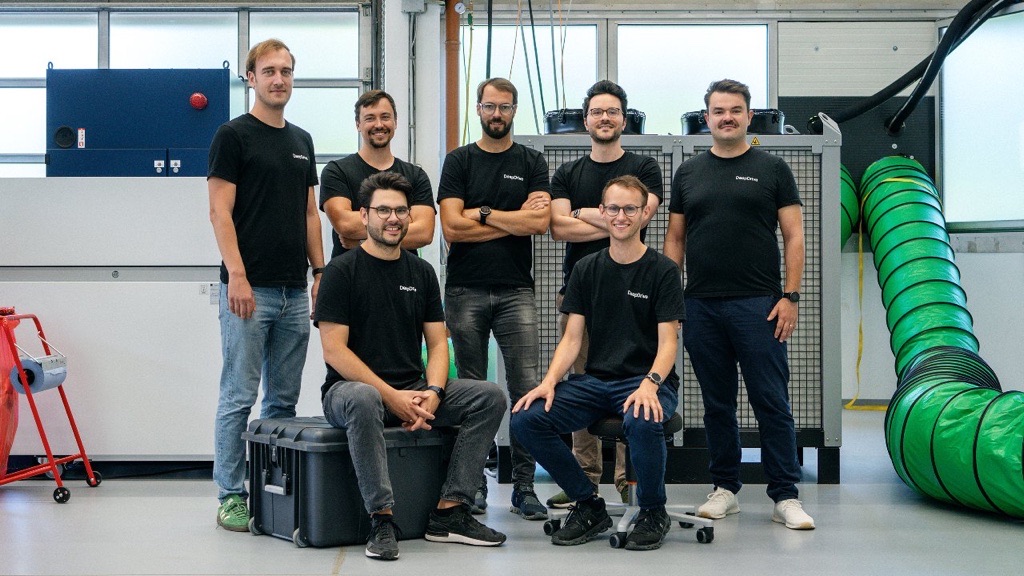German Start-Up DeepDrive Unveils Dual-Rotor Electric Motor Technology Backed by BMW and Continental
Munich-based start-up DeepDrive claims to have solved one of the longest-standing engineering challenges in the EV world — the in-wheel motor. With backing from BMW i Ventures and Continental, their patented dual-rotor design could boost efficiency by up to 20%, cut materials cost, and reshape how electric vehicles are built.
Introduction
The DeepDrive IW 2000 isn’t just another EV prototype — it’s a potential revolution in motion. Founded in 2021 by a group of young German engineers, DeepDrive has taken on what many consider the holy grail of electric vehicle innovation: putting the motor directly inside the wheel.
While dozens of companies have tried and failed over the past half-century, DeepDrive’s engineers believe they’ve finally cracked the code. Their compact, high-torque, dual-rotor, radial-flux motor promises more power, less weight, and unmatched efficiency.
Key Facts & Specifications
| Parameter | DeepDrive IW 2000 |
|---|---|
| Motor Type | Dual-Rotor, Radial-Flux In-Wheel Motor |
| Weight (including inverter) | 75 lbs (≈34 kg) |
| Peak Torque | 1,475 lb-ft (2,000 Nm) per wheel |
| Wheel Size Compatibility | 16–19 inches |
| Efficiency Boost | Up to +20% vehicle range |
| Investors | BMW i Ventures, Continental |
| Production Target | 2028 (small-series rollout) |
Design and Engineering
At the heart of DeepDrive’s innovation lies a dual-rotor system — a clever configuration where a stationary stator drives both an inner and outer rotor simultaneously. This design drastically increases torque density while keeping the package compact enough to fit inside standard wheel sizes.
To tackle the infamous unsprung mass problem, DeepDrive partnered with Continental to integrate the brake system directly into the motor module. By replacing multiple conventional drivetrain components (driveshaft, CV joints, brake assembly), the net corner weight becomes surprisingly efficient.
Image ALT: “DeepDrive IW 2000 in-wheel electric motor cutaway”
Technology and Features
DeepDrive’s in-wheel system delivers several key breakthroughs for automakers and EV performance enthusiasts alike:
-
Plug & Play Integration — Easily adaptable for existing EV platforms.
-
Silent Operation — Engineers claim “inaudible” noise and vibration levels.
-
Torque Vectoring Capability — Independent power control for each wheel.
-
Reduced Material Use — 80% less iron, 50% fewer magnets in central motor variant.
-
Scalability — Dual-rotor tech can also be applied to traditional central drives.
Competitors and Market Position
Unlike Silicon Valley EV start-ups that rely on vaporware, DeepDrive is engineering-first, backed by major OEM partners.
While other firms like Protean Electric and Elaphe have pursued similar designs, DeepDrive’s efficiency gains and integration with Continental could finally make in-wheel propulsion viable at scale.
Price and Release Date
DeepDrive isn’t selling a car — it’s selling the future drivetrain.
The company plans to begin small-series production by 2028, with initial deployment as all-wheel-drive add-ons for existing EVs. Full integration into purpose-built platforms is expected soon after.
Conclusion
For decades, engineers have promised the in-wheel revolution — and failed. But with DeepDrive’s dual-rotor innovation, OEM backing, and proven prototypes, the future might finally catch up to the promise.
If the technology performs as claimed, we could be looking at a world where cars are flatter, lighter, more efficient, and even capable of eliminating mechanical brakes entirely.
This might just be the most important EV development since the lithium-ion battery.
FAQ
What is DeepDrive?
A Munich-based EV start-up developing next-generation in-wheel and central electric motors.
How powerful is the DeepDrive IW 2000 motor?
It delivers 1,475 lb-ft (2,000 Nm) of torque per wheel.
When will DeepDrive technology reach production?
The company targets small-series production by 2028.
Who is backing DeepDrive?
Investors include BMW i Ventures and Continental.







